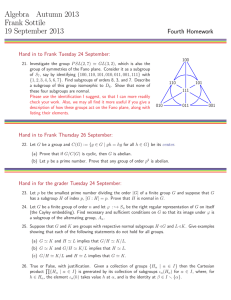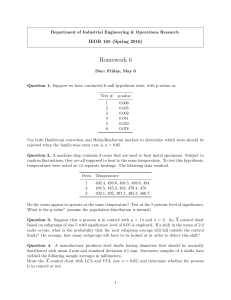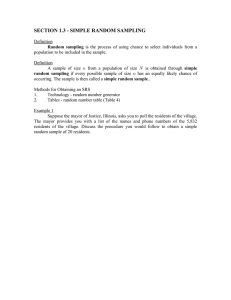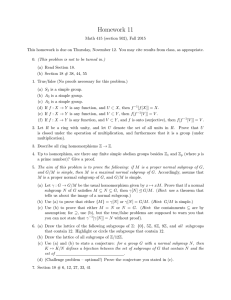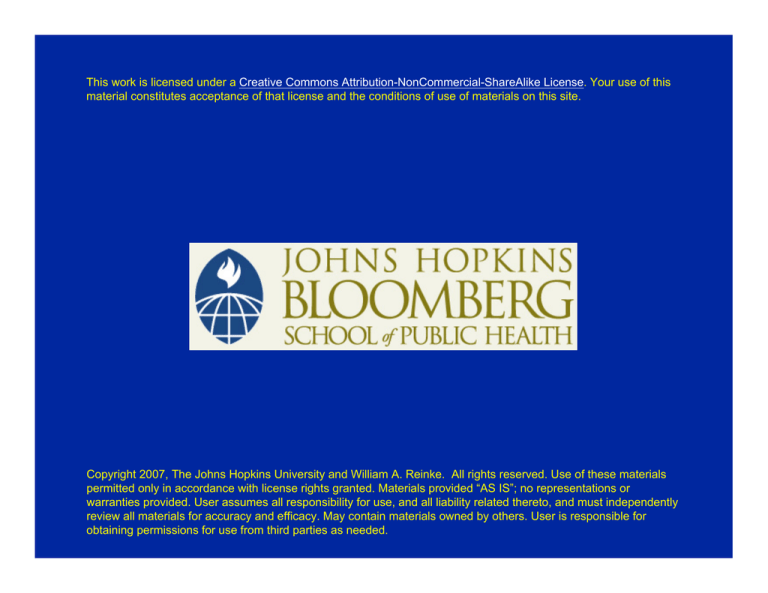
This work is licensed under a Creative Commons Attribution-NonCommercial-ShareAlike License. Your use of this
material constitutes acceptance of that license and the conditions of use of materials on this site.
Copyright 2007, The Johns Hopkins University and William A. Reinke. All rights reserved. Use of these materials
permitted only in accordance with license rights granted. Materials provided “AS IS”; no representations or
warranties provided. User assumes all responsibility for use, and all liability related thereto, and must independently
review all materials for accuracy and efficacy. May contain materials owned by others. User is responsible for
obtaining permissions for use from third parties as needed.
Session 3
Sampling Design Alternatives
William A. Reinke, Ph.D.
Professor
Department of International Health
Johns Hopkins University
School of Hygiene and Public Health
Principles To Be Developed
• Sample Statistics Differ from but Are
Related to Population Parameters
• Difference Can Be Reduced by Obtaining
Larger Sample of Data
• Some Sampling Designs for Obtaining
These Data Are
– More Informative
– Less Costly
– More Efficient
Main Measures of Interest
Population
Parameter
Continuous Variables
- Average: Arithmetic Mean
- Dispersion: Standard Deviation
Sample
Statistics
μ
σ
X
S
π
P
Discrete Variables
- Relative Frequency: Proportion
UNIVERSE
SAMPLE
x
Parameters
μ
σ
π
Estimates
Statistics
X
S
P
Hypothetical Sample Results
Three Populations
X
μ
A
75
75
75
75
75
B
73
76
74
78
74
C
79
79
87
72
66
75
75
75
≈75
75
?
Precise Estimates are Possible If • There is Little Variation Among Sample Results
• The Sample Size is Sufficiently Large
Τhe Mathematical Relationship is S tan dard Error =
σ2
=
or
n
Variance
Sample Size
π (1 - π )
n
Daily Attendance (X)
115
110
105
100
95
90
85
80
75
70
65
60
55
50
45
40
σ x = 15
2
σx =
σ
n
2
=
15
=3
25
5%
60
65
70
75
80
85
90
Monthly Average of Daily Attendance (X)
σ &&&
x =
σ
2
n
=
15
2
36
95%
μ−5
μ
μ+5
D
Daily Average of 36 Days (X)
= 2.5
75
Type II Error of Omission
10%
80
Type I Error of Commission
5%
Determination of Sample Size
Simple Random Sample
Purpose of analysis
Sources of
Error
Type of
Error
I
I
Estimate universe mean
Decide whether Universe
Mean Conforms to Defined
Standard
Estimate Dfferences
between Two Universe
Means
Decide Whether Real (nonzero) Differences Exists
between Two Universe
Means
Assumptions:
Z = 2.0 (95% confidence)
Z1=2.0 (5% Risk Type I Error)
Z2=1.3 (10% Risk Type II Error)
General
formula for n
⎡ Z S ⎤
⎢⎣ D ⎥⎦
2
I
2
⎡ ( Z1 + Z2 )S ⎤
⎢⎣
⎥⎦
D
2
I
⎡ ZS ⎤
2⎢
⎣ D ⎥⎦
2
2
Special case
4S
2
2
D 2
1 0 .9 S
D2
8 S
D
⎡(Z +Z )S⎤
2⎢ 1 2 ⎥
⎣ D ⎦
2
2
2
2
2
21.8 S 2
D2
Sampling
Error
Error Reduction
Error Increase
10
20
30
40
50
60
Sample Size
70
80
90
Rules of Stratification
for Separate Analysis of Population
Subgroups
• Select Subgroups as Homogenous as
Possible
• Equalize Subgroup Sample Sizes as
Much as Possible
Population Situation
Subgroup
Village
A
B
C
D
E
Members per Subgroup
(Households)
400
800
200
500
100
2,000
Sampling Requirement
• Sample of 20 Households from Each of 3 Villages
• At Start Each of Household Has 60 Chances in 2,000 (p=.03
to Be Selected
Sampling Requirement
• Sample of 20 Households from Each of 3 Villages
• At Start Each of Household Has 60 Chances in 2,000 (p=.03)
to Be Selected
Example
Probability that a Specific Household in Village D
is Selected:
500
20
60
3 X
X
=
500
2 ,0 0 0
2 ,0 0 0
Village
Chosen
Probability Probability
Proportional in Selected
to Size(PPS) Village
σw
2
Within Subgroups Means
2
σb
Between Subgroup Means
Rules of Multistage Sampling
for Combining Subgroup Information
to Obtain Aggregate Estimates
• Select Subgroups as Heterogeneous as
Possible
• Select Subgroups with Probability
Proportional to Size (PPS)
• Obtain Equal Number of Observations
per Subgroups



